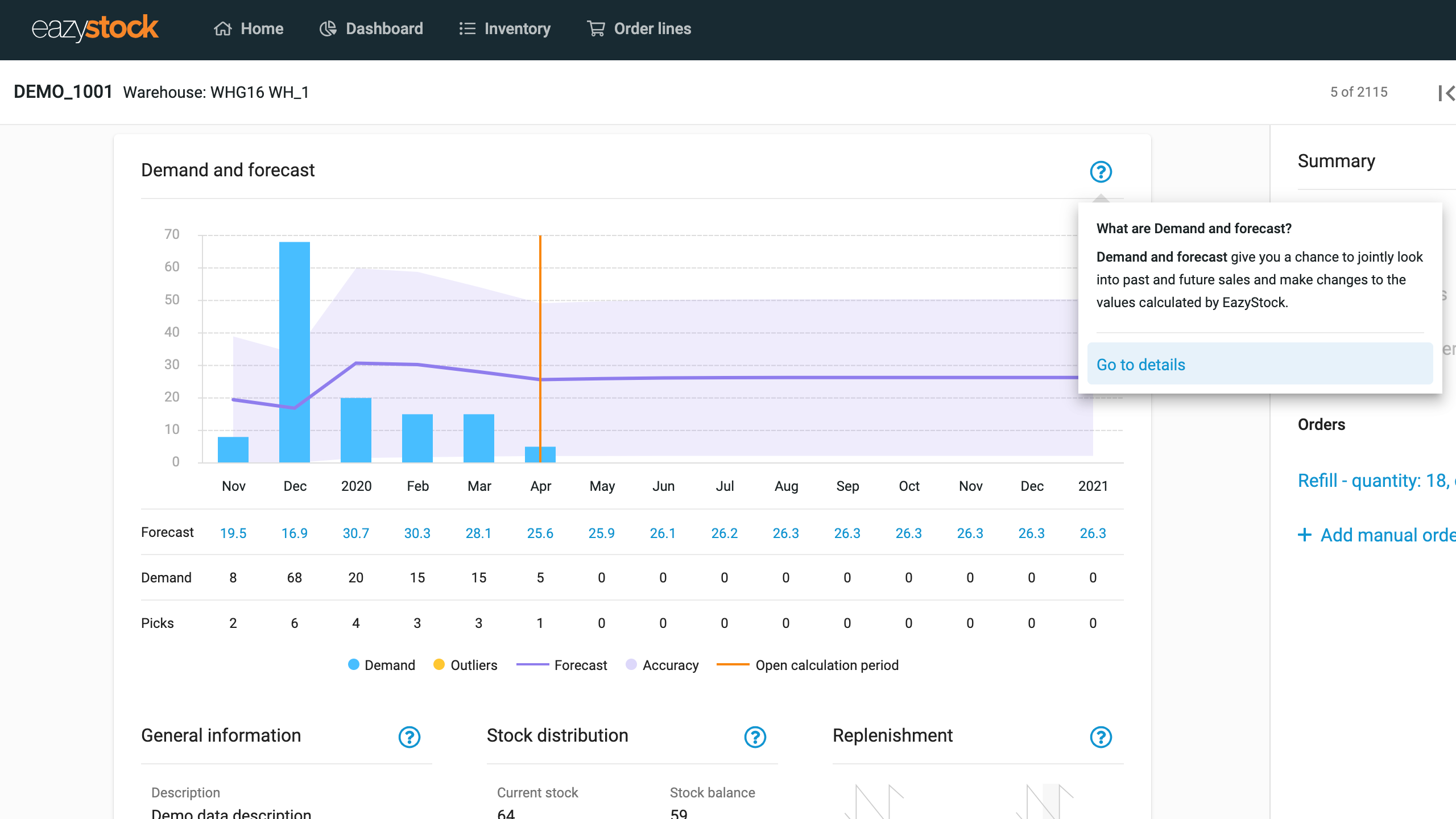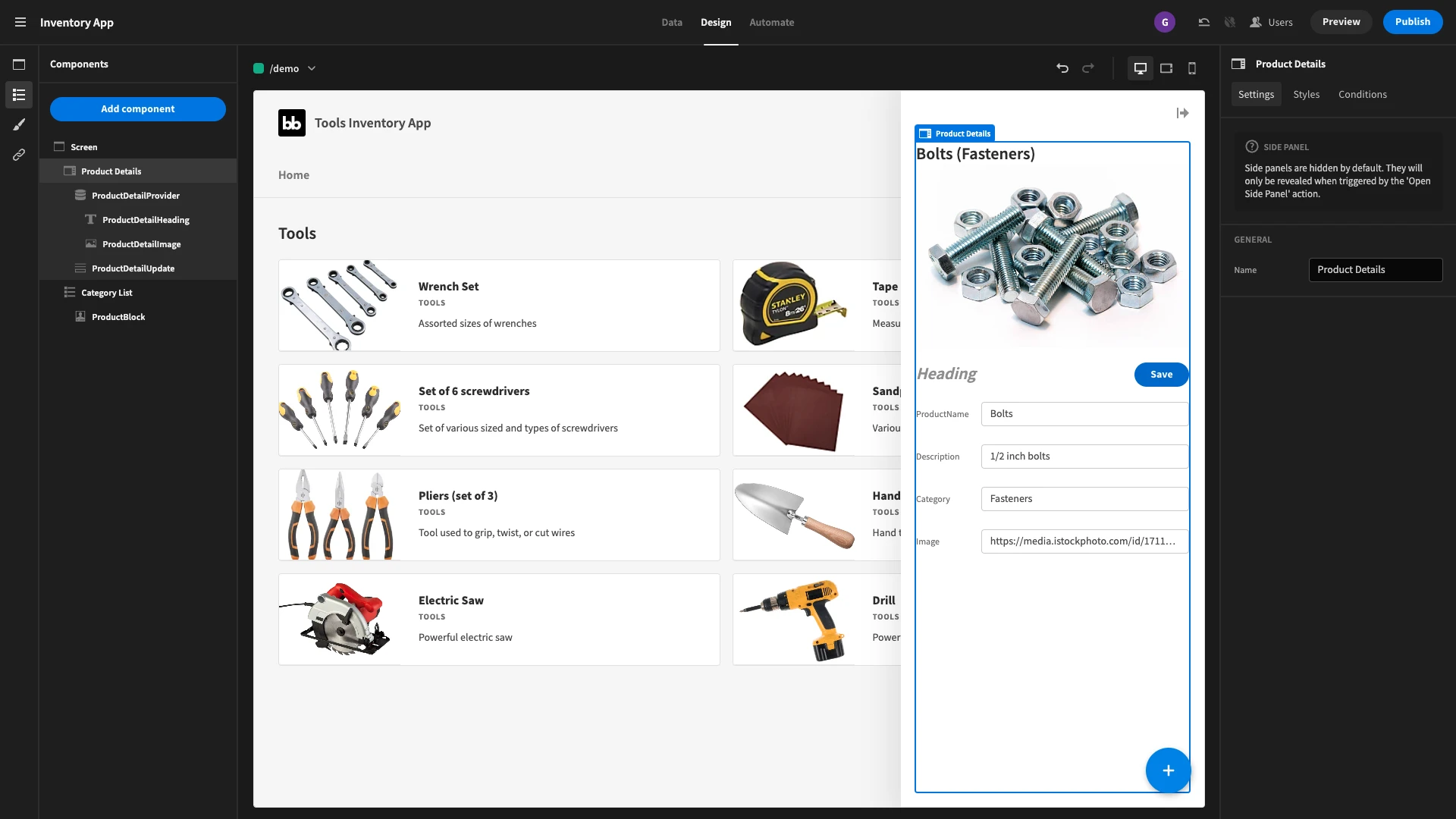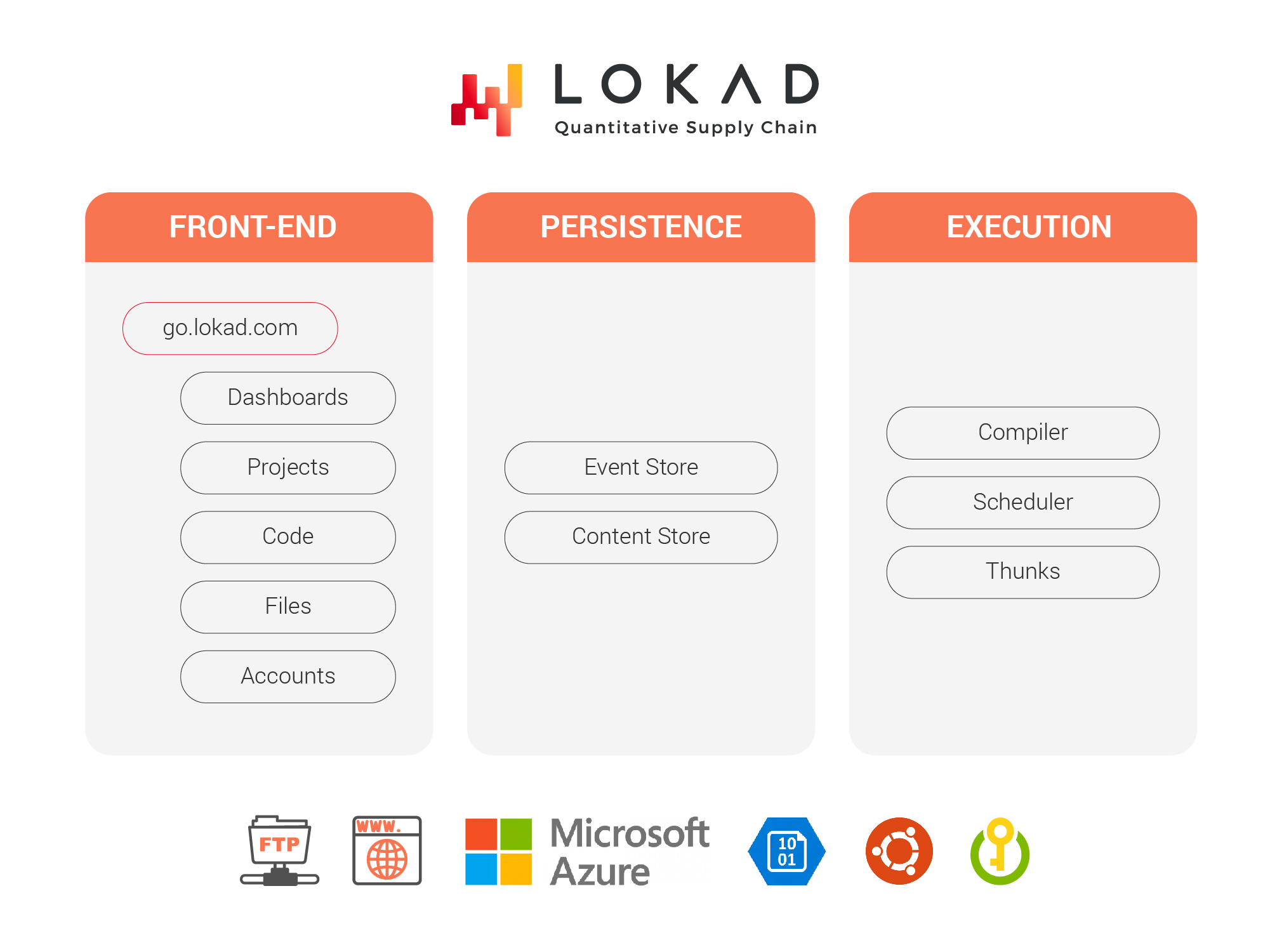Alternatives to Kinaxis
1. EazyStock
+Pros
- ERP-agnostic integration capabilities
- Live simulation tools for risk-free scenario testing
- Proven capabilities with documented outcomes
-Cons
- Trails enterprise leaders in multi-location scalability
- May lack comprehensive supply chain integration capabilities required by larger organizations
One highlighted feature and why it's amazing
The platform's AI-powered demand forecasting engine analyzes historical patterns, seasonality, and supplier variables to dynamically adjust reorder points and safety stock levels.

Another highlighted feature of why it’s amazing
EazyStock's automated purchase order generation eliminates manual ordering processes while maintaining oversight through exception management alerts for demand outliers and stockout risks.
2. Inventory Planner
+Pros
-Cons

3. Lokad Supply Chain Analytics
+Pros
- Probabilistic forecasting approach
- Decision automation capabilities
- Integrated pricing-inventory optimization
-Cons
- Technical resource requirements
- Implementation complexity
- Market accessibility constraints
One highlighted feature and why it's amazing
Lokad's core differentiator lies in quantile grid modeling that projects multiple demand scenarios while quantifying uncertainty rather than generating single-point predictions.

Another highlighted feature of why it’s amazing
Unlike analytical tools requiring manual interpretation, Lokad generates concrete purchase orders with specific quantities, delivery dates, and supplier allocation.
Other Alternatives
Microsoft Azure AI Inventory
Netstock
Oracle Warehouse Management
Prediko
RELEX Solutions
How We Researched This Guide
About This Guide: This comprehensive analysis is based on extensive competitive intelligence and real-world implementation data from leading AI vendors. StayModern updates this guide quarterly to reflect market developments and vendor performance changes.
216+ verified sources per analysis including official documentation, customer reviews, analyst reports, and industry publications.
- • Vendor documentation & whitepapers
- • Customer testimonials & case studies
- • Third-party analyst assessments
- • Industry benchmarking reports
Standardized assessment framework across 8 key dimensions for objective comparison.
- • Technology capabilities & architecture
- • Market position & customer evidence
- • Implementation experience & support
- • Pricing value & competitive position
Research is refreshed every 90 days to capture market changes and new vendor capabilities.
- • New product releases & features
- • Market positioning changes
- • Customer feedback integration
- • Competitive landscape shifts
Every claim is source-linked with direct citations to original materials for verification.
- • Clickable citation links
- • Original source attribution
- • Date stamps for currency
- • Quality score validation
Analysis follows systematic research protocols with consistent evaluation frameworks.
- • Standardized assessment criteria
- • Multi-source verification process
- • Consistent evaluation methodology
- • Quality assurance protocols
Buyer-focused analysis with transparent methodology and factual accuracy commitment.
- • Objective comparative analysis
- • Transparent research methodology
- • Factual accuracy commitment
- • Continuous quality improvement
Quality Commitment: If you find any inaccuracies in our analysis on this page, please contact us at research@staymodern.ai. We're committed to maintaining the highest standards of research integrity and will investigate and correct any issues promptly.